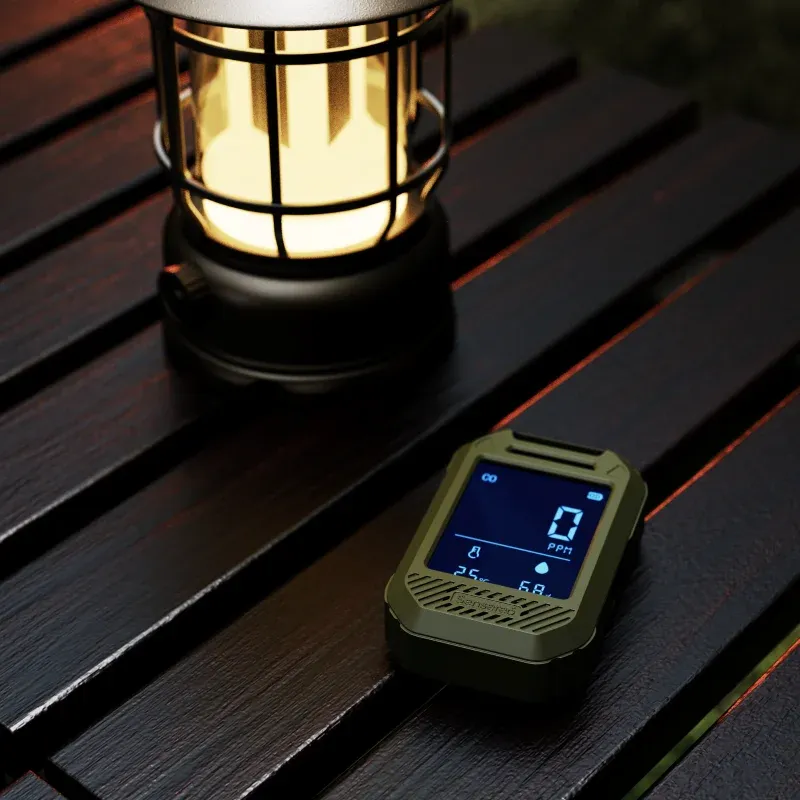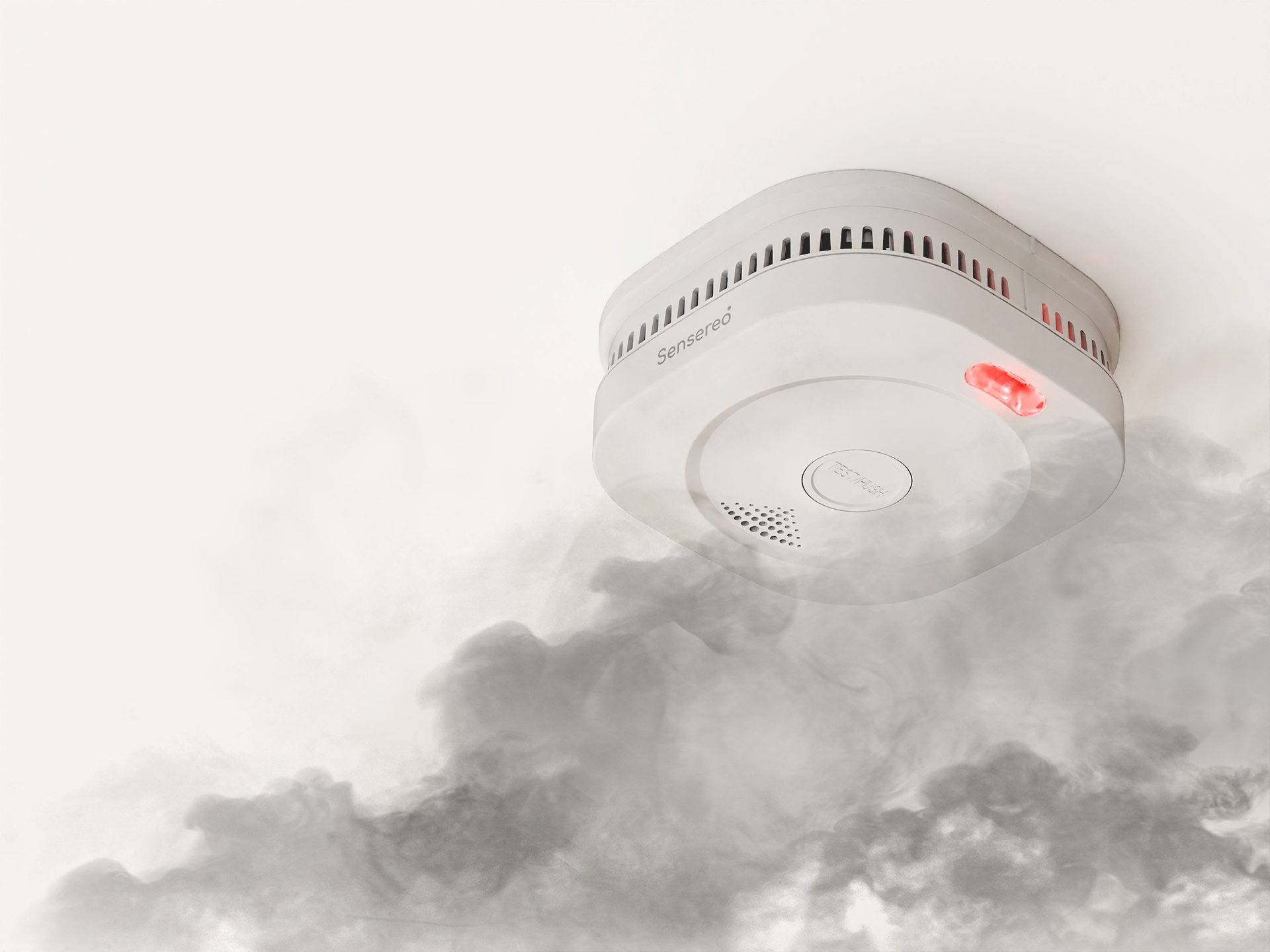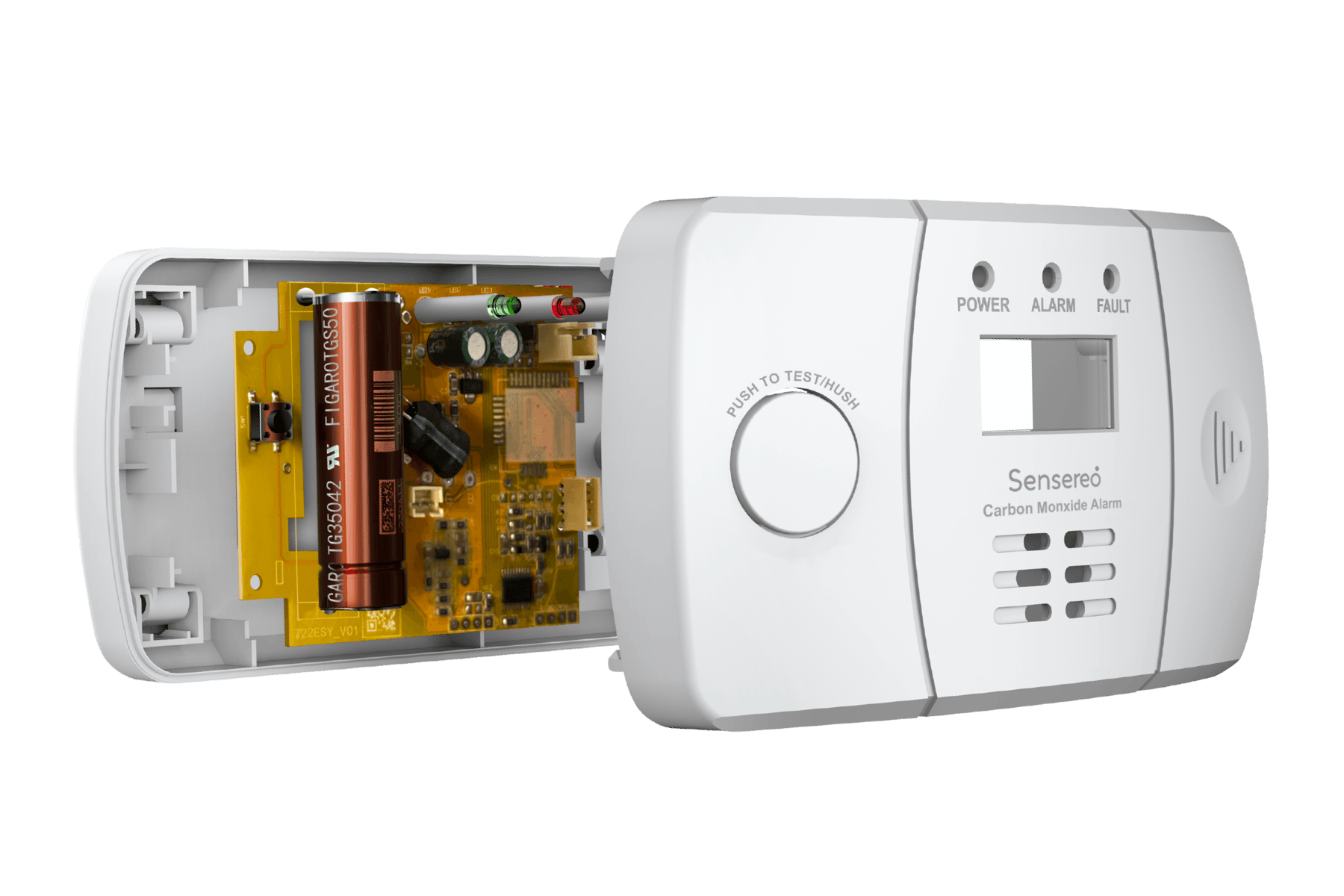
Brief Summary:
To prevent Carbon Monoxide (CO) poisoning in RVs, the single most critical measure is installing and maintaining a reliable RV carbon monoxide detector. CO is an odorless, colorless gas produced by fuel-burning appliances (like stoves, heaters, or generators). Always use your generator at least 15-20 feet away from the RV with the exhaust facing away, ensure cross-ventilation by opening opposing windows/vents when using gas appliances, and perform a monthly test on your detector. Replace your carbon monoxide alarm in camper every 5-7 years or when the end-of-life indicator signals a change is necessary. If the alarm sounds, immediately move everyone into the fresh air and call emergency services.
Understanding Carbon Monoxide: The Silent Threat
If you’ve ever spent even a single night in your RV with the windows closed, you know how easy it is to underestimate the hidden dangers inside. One of the most serious threats is carbon monoxide (CO) a colorless, odorless, and tasteless gas that can quickly become deadly in confined spaces. Whether you’re cooking up a family breakfast on the propane stove, running the heater on a chilly night, or powering up a generator for some modern comforts, CO can sneak in silently. It’s generated through incomplete burning of fuels such as propane, gasoline, or even wood.
You might not realize something is wrong right away. Symptoms of carbon monoxide poisoning are often mistaken for the flu: headaches, dizziness, nausea, confusion, even general tiredness or throat irritation. If left unchecked, these can progress alarmingly fast potentially leading to unconsciousness or worse.
As RV owners, we’re at particular risk because of the tight spaces and heavy use of appliances. That’s why I never travel without a functioning CO detector for RV. It really can make all the difference. Make sure you have a carbon monoxide alarm in camper installed, that all appliances are well-maintained, and that the space is properly ventilated. It’s the foundation of your family’s safety.
Friendly reminder, CO detectors detect carbon monoxide only not propane or natural gas leaks.
Why CO Detectors Are Crucial for RV Safety
I remember the first time I truly appreciated the value of a rv carbon monoxide detector. It was late at night, and the world outside was quiet, but our sleeping space was anything but safe a faulty appliance had begun to leak CO. Had the alarm not gone off, we might not have woken up.
Why are carbon monoxide alarms in campers so essential? First, CO is impossible to detect with your senses. Only a high-quality detector can catch rising levels before they put your health at risk. These alarms provide early warnings, especially vital if you have children, elderly, or anyone with medical conditions aboard groups that are especially vulnerable to CO exposure.
There are multiple types of CO detectors you can install in your RV setup. Battery-powered models are great for portability and work even in the event of power outages, while hardwired units offer uninterrupted service but may need professional installation. There are even reliable portable models, like those by Sensereo, designed for families on the move. When it comes to protecting your loved ones, investing in a trusted, sensitive, and durable detector should be non-negotiable.
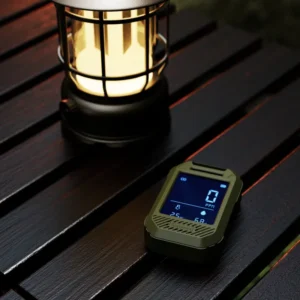
Effective Ventilation Strategies in Your RV
No matter how good your appliances might be, proper ventilation is non-negotiable when it comes to CO safety on the road. Without good airflow, even the best rv carbon monoxide detector or alarm can only offer alerts, but won’t prevent the buildup in the first place.
Tips for Ensuring Adequate Airflow
- Don’t block vents: Keep all ventilation openings, flues, and exhaust fans clear at all timesinside and out.
- Check gas lines regularly: Look for leaks or damage, and get a professional inspection once a year.
- Use your CO detector: Test it regularly to make sure it’s working as expected.
- Outdoor appliances stay outdoors: Never use camp stoves or grills inside.
- Care for exterior vents: Remove debris, dust, and check for any insect nests that could block airflow.
Best Practices for Vents and Windows
- Cross-ventilation: Open windows and roof vents on opposite sides whenever possible to let air move freely.
- Powered fans: Use them for active air movement, especially on still days.
- Strategic small vents: Place near gas appliances so any CO leaves the vehicle quickly.
Trust me, getting into these habits takes just a few moments but can truly keep your RV filled with fresh air and peace of mind.
Regular Maintenance: Checking Your CO Detector
Like so many other travelers, I used to assume that because my co detector for rv was installed, everything was fine. After a wake-up call from a false alarm that turned out to be a dying battery, monthly checks have become part of my regular RV routine.
Here’s what I suggest:
- Test your CO detector once a month using the alarm test button. If it stays quiet, check the manufacturer’s guide for troubleshooting.
- Visually inspect it for error messages or damage, and make sure it’s mounted securely.
- Gently dust or vacuum itnever use liquids for cleaning.
- Change the batteries every year, or more often if your device signals low power.
- If your rv carbon monoxide detector is more than 5-7 years oldor it chirps for a replacement, it’s time for an rv carbon monoxide detector replacement.
This routine is easy but absolutely essential. Keeping your carbon monoxide alarm in camper reliable could save your life more than once along the journey.
Safe Use of Generators in RV Settings
Generators are both a blessing and a risk in RV life. Used right, they’re a reliable energy source, used wrong, they can become a source of deadly carbon monoxide. Whenever our family sets up camp, we double-check generator placement and I highly recommend you do the same.
- Keep it outdoors: Always operate your generator outside; never, ever bring it into an enclosed space, not even for a few minutes.
- Safe distance: Place your generator at least 15-20 feet away from your RV, keeping the exhaust pointed away from any windows or doors.
- Clear the area: Leave 3-5 feet of open space around the generator for good airflow.
- Monitor with a CO detector for RV:Trust your rv carbon monoxide detector to provide an extra layer of safety whenever your generator is running.
By following these guidelines, you’ll easily combine the practical benefits of portable energy with the peace of mind that you’re minimizing CO risks.
Emergency Measures: What to Do if CO Poisoning Is Suspected
Having a rv carbon monoxide alarm is your first defense, but quick reactions matter just as much if the alarm is triggered or anyone starts to feel off. What should you do?
- Get everyone out into fresh air immediately. Don’t try to “wait it out”even mild headaches or dizziness are red flags.
- Call emergency services from a safe place. CO poisoning must be taken seriously.
- Don’t re-enter your RV until professionals say it’s safe.
- If anyone is unconscious or stops breathing, call for help and use CPR if you know how.
We can’t control every hazard, but we can be prepared and act fast. Always listen to your body and your rv carbon monoxide detector for the sake of your loved ones.
Personal RV Travel Experience: Lessons Learned
Here’s a story that still makes me pause when I think about it. Last spring, we were parked beside a lake, savoring the simple pleasures of RV life until, out of nowhere, our co detector for rv suddenly shrieked with an urgent alarm. My first instinct was panic, but quickly, training and preparation took over.
We threw open every window and door, powered down the stove, and hurried everyone outside. That alert was no fluke a leaky seal on the propane line had let CO accumulate just enough to set off the detector. If not for our rv carbon monoxide detector, we might have chalked up our earlier headaches to too much sun and gone to bed, never knowing what was creeping in.
That night, our family learned that “just in case” precautions do save lives. For all my fellow RV enthusiasts: Don’t ignore symptoms, no matter how minor, and don’t skimp on your rv carbon monoxide detector replacement schedule. Trust your detectors, keep a regular checklist, and you’ll create the kind of safety net every adventurer deserves.
Selecting the Right CO Detector and Replacement Tips
Over the years, I’ve learned that choosing a co detector for rv isn’t about picking the cheapest option, but about what will really keep your loved ones secure. Always look for devices made specifically for RVs or vehicles—these stand up to the bumps, shakes, and temperature shifts that come with RV travel.
The best units have high sensitivity, easy-to-read digital displays, test and silence buttons, and end-of-life alerts that make rv carbon monoxide detector replacement a breeze. Top contenders like First Alert and Kidde Nighthawk are solid picks, but don’t overlook reliable, portable options like Sensereo.
For example, the Sensereo Bastion-1 uses electrochemical sensing technology the same type found in residential CO detectors to provide early alerts in enclosed spaces such as RVs or vans. But Bastion is designed for supplementary use and should not replace permanently installed, certified CO alarms in RVs or homes.
A good rule of thumb is to replace your carbon monoxide alarm in camper every 5 to 7 years or sooner if you see any error messages. Regular cleaning and monthly tests truly extend the life and function of your device. Take these extra steps, and your only worries on the road will be which destination to pick next!
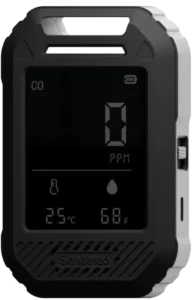
Conclusion: Prioritizing Safety for Enjoyable RV Experiences
We all hit the road for the same reasons: freedom, adventure, and precious time with those we care about. When we take carbon monoxide seriously and invest in a reliable co detector for rv, prioritize rv carbon monoxide detector replacement, check our equipment regularly, and ensure ventilation, we’re not just ticking off a checklist we’re protecting what matters most.
So please, whether you’re a weekend warrior or full-timer, make carbon monoxide alarm in camper safety steps part of your normal routine. Your vigilance will keep the fun times rolling with far fewer worries.
Protect your RV adventures with Bastion-1 — your compact, travel-ready CO detector for peace of mind wherever you park.
FAQs
Q1. Do RVs Need Special Carbon Monoxide Detectors?
A1. Yes, specialized RV CO detectors are highly recommended. They are built to withstand the unique RV environment, including vibration, temperature changes, and humidity, which can cause standard residential units to fail prematurely.
Q2. What Is the Best Carbon Monoxide Detector for an RV?
A2. The best detectors are those that are RV-rated, offer a digital display (to track low CO levels), and are either hardwired (12V DC) or use a reliable, long-life battery with an end-of-life signal. Look for brands like Sensereo.
Q3. Is There Such a Thing as a Travel Carbon Monoxide Detector?
A3. Yes. A travel CO detector is a compact, portable, battery-powered unit perfect for extra protection in unfamiliar lodging, such as rental properties, hotel rooms, or cabins, in addition to an RV.
Q4. Does an RV Propane Detector Detect Carbon Monoxide?
A4. No, not automatically. A dedicated propane (LP) detector only senses propane gas. However, many RVs use Combo Alarms which house separate sensors for both Propane and Carbon Monoxide in one unit. Always check the label to ensure the device detects CO.

